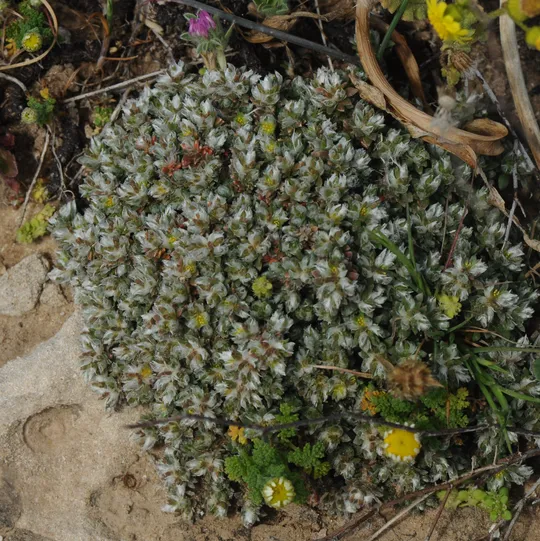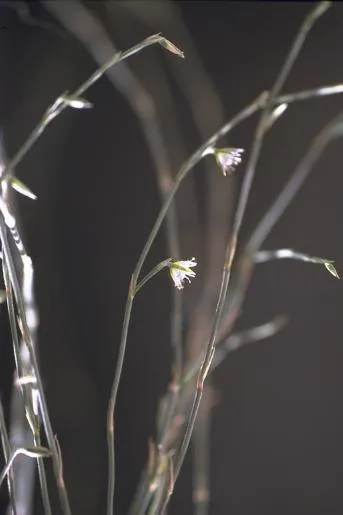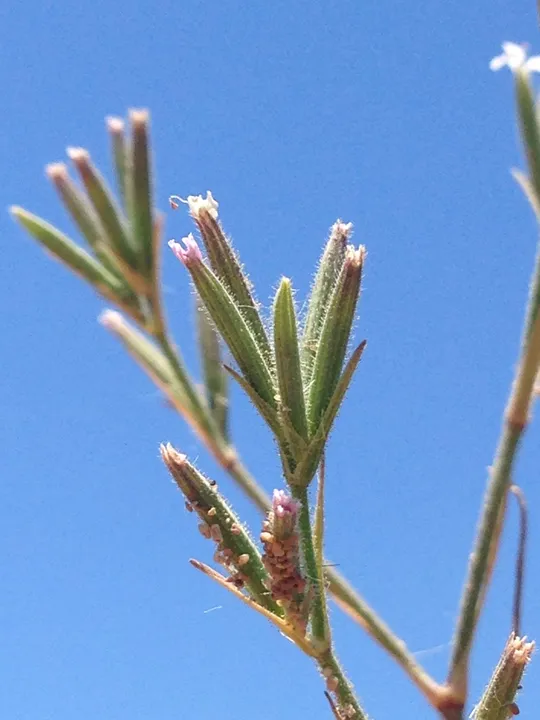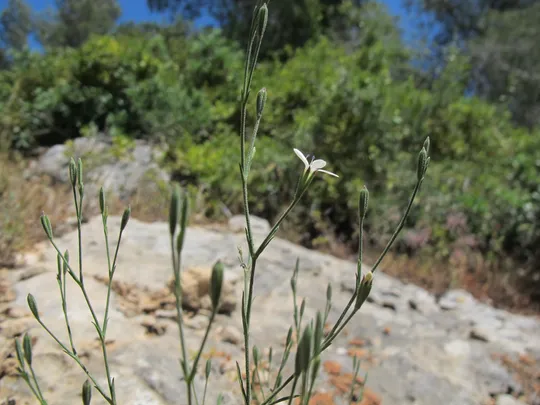Echinolate Nailwort, Eurasian Nailwort
Paronychia echinulata
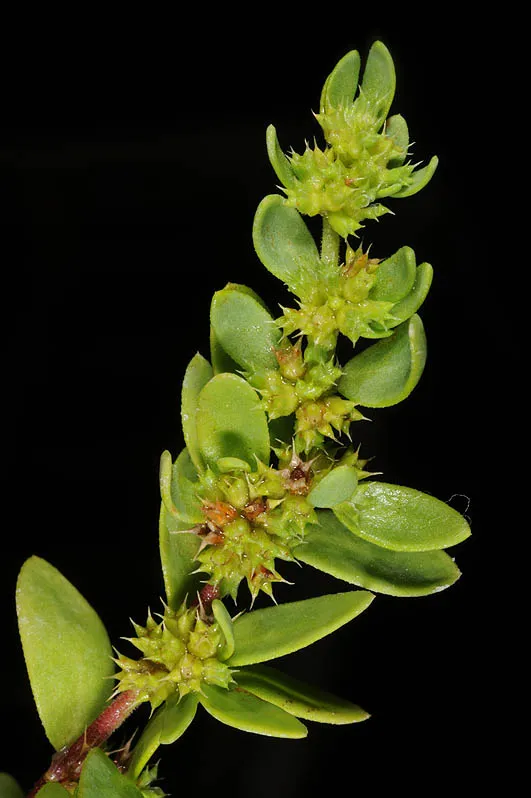
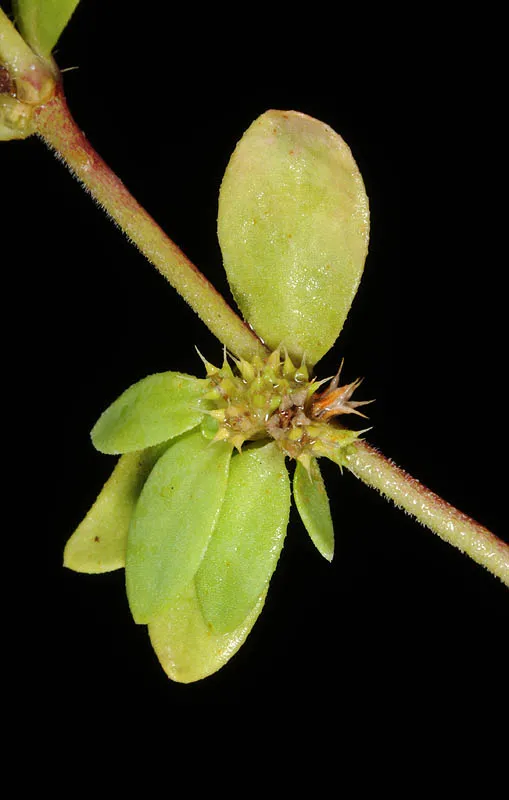
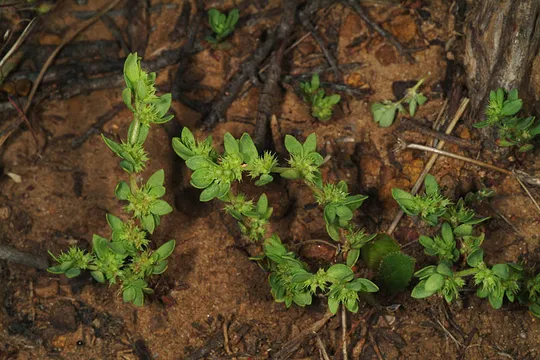
Paronychia echinulata is an erect or branching tiny annual that is 2-5 cm in size. It grows on non-calcareous soil (Hamra soil on the coast and sandstone on Mount Hermon). The leaves are elliptical, entire and opposite. The inflorescences are crowded between the leaves and accompanied by spiky bracts. After blooming, the calyx hardens, becomes slightly thorny (this is where the species gets its name “echinate”) and encloses the fruit capsule. The fruit does not fall off the dry stem, but remains attached to it even when the stem dries up and shrivels. This combination of characteristics can be viewed as the beginning of synaptospermy in the genus Paronychia.
Paronychia echinulata
grows on the coastal
plain in the Sharon and was previously found in the western Galilee at the
following locations: Wadi Poleg swamp Reserve (extinct since the 1960s), Ramat
HaKovesh, Bney Tsion Reserve (extinct since the 1990s), Ilanot East (below the
high power line) and the Liman Reserve, north of Akhziv (observed in 2004). At
the foot of the Hermon, the species grows in a sandstone site at Mount Keta.
P. echinulata grows in calcareous sandstone rock
crevices and on Hamra soil on the coastal plain, as well as on ferrous
sandstone (in small soil pockets) at Mount Keta at the foot of the Hermon. All
the locations are in open areas exposed to sunlight. The species has a clear
calciphobic affinity.
Differs from other Paronychia
species in its non-membranous bracts. Similar to Polycarpon, but has
thorny bracts. The fruit is a synaptosperm, which remains attached to the dry
stems that do not fall apart easily, which makes this species unique in the genus
Paronychia, which is adapted to arid conditions in Mediterranean climates.
·
Its
habitat – Hamra-sand soil has almost entirely disappeared, and remaining sites
are imminently threatened by development. The number of known populations has
decreased sharply and in recent surveys, P. echinulata was not found in locations where it was previously found.
The species apparently remains in only four locations in Israel. It is very
rare and has been collected only a few times.
·
The
surviving populations of P. echinulata
are disjunct, separated by a few to a dozens of km.
·
The
number of plants in each population is very small (between 5-30 at each location),
and this may be the reason for extinction. However, small population size is
not necessarily a reason for extinction in annual plants, because they are
known to preserve large seed banks in the ground. Nevertheless, there is no
information regarding Paronychia echinulata seed banks or annual fluctuations in population sizes.
·
The
species has a broad geographic distribution, and apparently it is not globally endangered.
On the Balearic Islands, it is classified as NT (Nearly Threatened, IUCN
category).
·
P. echinulata is protected only in the Liman Reserve. This is a
very small reserve surrounded by industrial plants, agricultural fields and human
habitations.
Efforts to locate
populations in the Hamra sand reserves on the coastal plain or outside of them,
should be intensified, in order to verify that it has not become extinct.
The species is common on
the sandy coastal plains of most Mediterranean countries – from Morocco and
Algeria to Spain, France, Italy, Greece and Crete. It is also found on the
Mediterranean islands – Cyprus and the Balearic Islands. It is absent from Lebanon,
Syria and Turkey. In Morocco deviates from the Mediterranean to the shores of
the Atlantic Ocean.
Paronychia
echinulata is a small,
difficult to locate in the field, annual plant that grows on Hamra soil on the
coastal plain. Is extinct in three out of the six locations where it previously
existed in Israel. All of the extinctions occurred within small reserves along
the coastal plain. This is an unusual case, because habitat destruction was not
the main extinction factor. It is possible that the large number of visitors to
these small reserves on the coastal plain negatively affected the specie's chances
of becoming established, due to trampling or other factors. This does not bode
well for rare coastal plain species in Israel, which could be improved by the
allotment of larger reserves. Another possibility is that the plant’s small size,
makes it difficult to locate in surveys and it may not have been extinct at all
at sites where it was previously documented. Renewed efforts should be made to
locate the species in previously documented locations.
אתר אינטרנט: Herbari Virtual de les Illes Balears
http://herbarivirtual.uib.es/
Current Occupancy Map
| 1000 squre meter pixel | 5000 squre meter pixel | 10000 squre meter pixel | |
|---|---|---|---|
| number of observations | 0 | 0 | 0 |
| in total pixels | 0 | 0 | 0 |
| Family | Caryophyllaceae |
| Classification | On the endangered species list |
| Ecosystem | Coastal area |
| Chorotype | Mediterranean |
| Conservation Site | Ilanot, Liman Nature Reserve |
| Rarity |
1
4
6
|
|---|---|
| Vulnerability |
0
4
4
|
| Attractiveness |
0
0
4
|
| Endemism |
0
0
4
|
| Red number |
1
4.7
10
|
| Peripherality | NW |
| IUCN category | DD EW EX LC CR EN VU NT |
| Threat Definition according to the red book | Endangered |
 Based on:
Based on:
